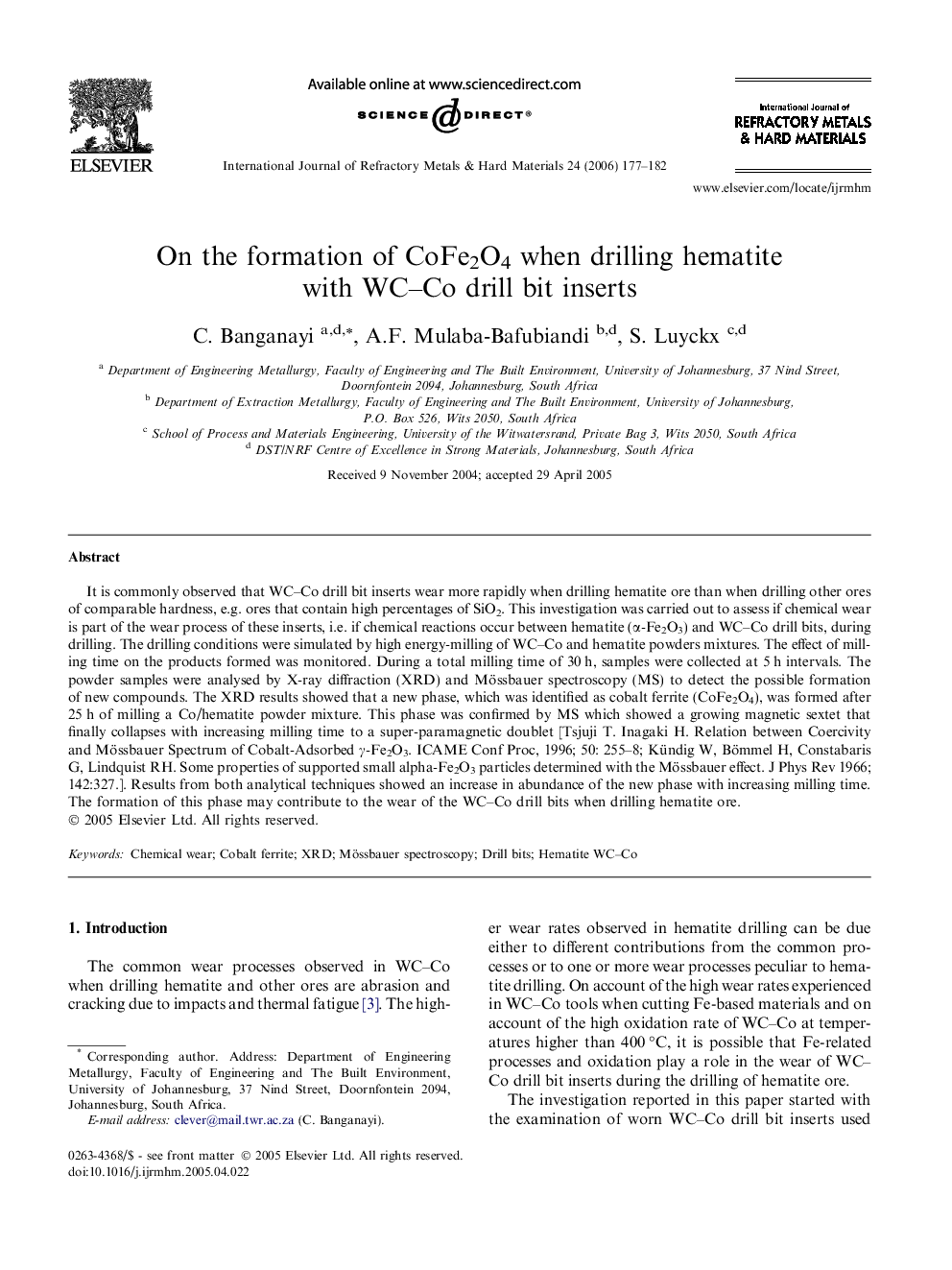| Article ID | Journal | Published Year | Pages | File Type |
|---|---|---|---|---|
| 1604705 | International Journal of Refractory Metals and Hard Materials | 2006 | 6 Pages |
It is commonly observed that WC–Co drill bit inserts wear more rapidly when drilling hematite ore than when drilling other ores of comparable hardness, e.g. ores that contain high percentages of SiO2. This investigation was carried out to assess if chemical wear is part of the wear process of these inserts, i.e. if chemical reactions occur between hematite (α-Fe2O3) and WC–Co drill bits, during drilling. The drilling conditions were simulated by high energy-milling of WC–Co and hematite powders mixtures. The effect of milling time on the products formed was monitored. During a total milling time of 30 h, samples were collected at 5 h intervals. The powder samples were analysed by X-ray diffraction (XRD) and Mössbauer spectroscopy (MS) to detect the possible formation of new compounds. The XRD results showed that a new phase, which was identified as cobalt ferrite (CoFe2O4), was formed after 25 h of milling a Co/hematite powder mixture. This phase was confirmed by MS which showed a growing magnetic sextet that finally collapses with increasing milling time to a super-paramagnetic doublet [Tsjuji T. Inagaki H. Relation between Coercivity and Mössbauer Spectrum of Cobalt-Adsorbed γ-Fe2O3. ICAME Conf Proc, 1996; 50: 255–8; Kündig W, Bömmel H, Constabaris G, Lindquist RH. Some properties of supported small alpha-Fe2O3 particles determined with the Mössbauer effect. J Phys Rev 1966; 142:327.]. Results from both analytical techniques showed an increase in abundance of the new phase with increasing milling time. The formation of this phase may contribute to the wear of the WC–Co drill bits when drilling hematite ore.
